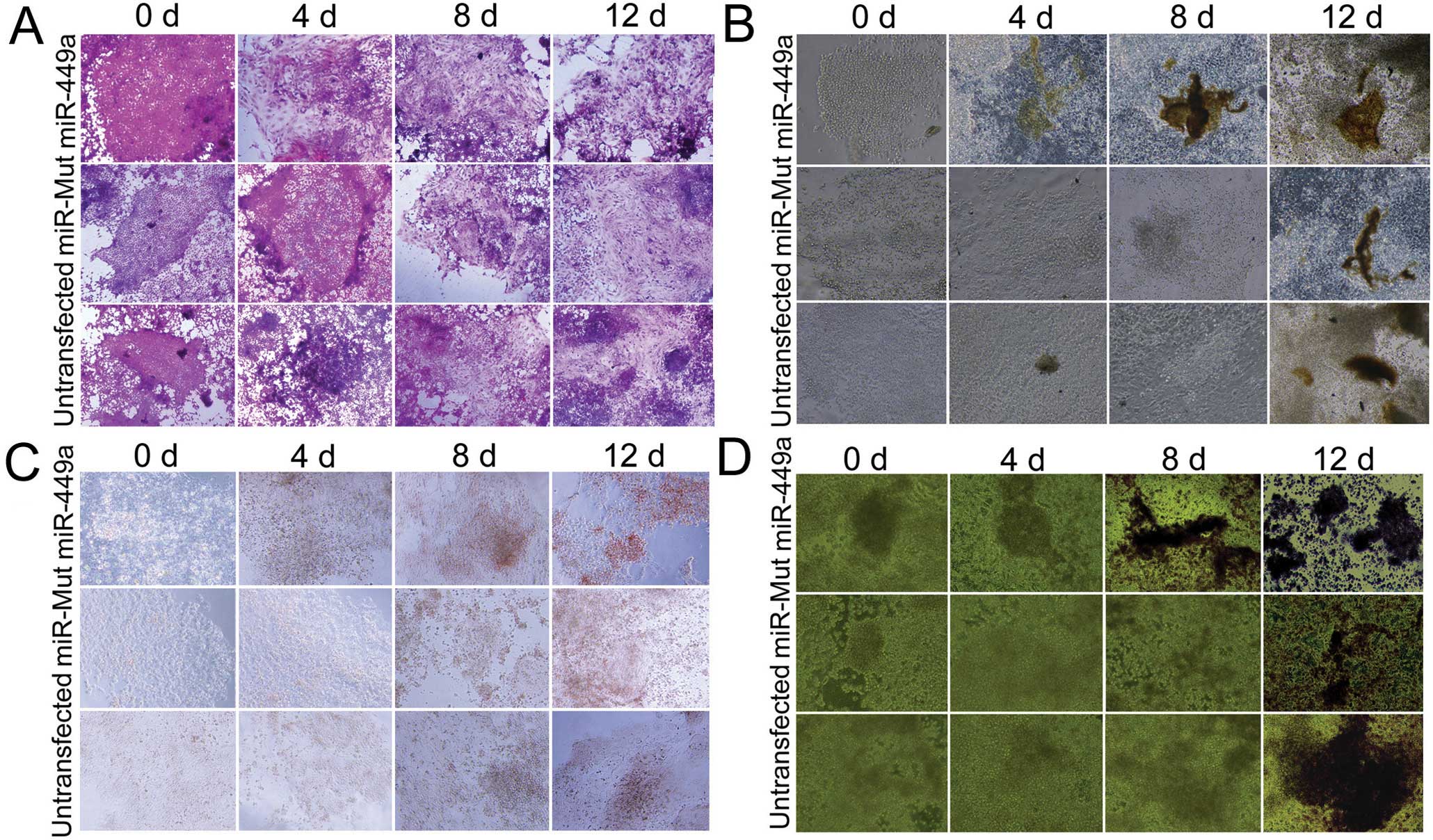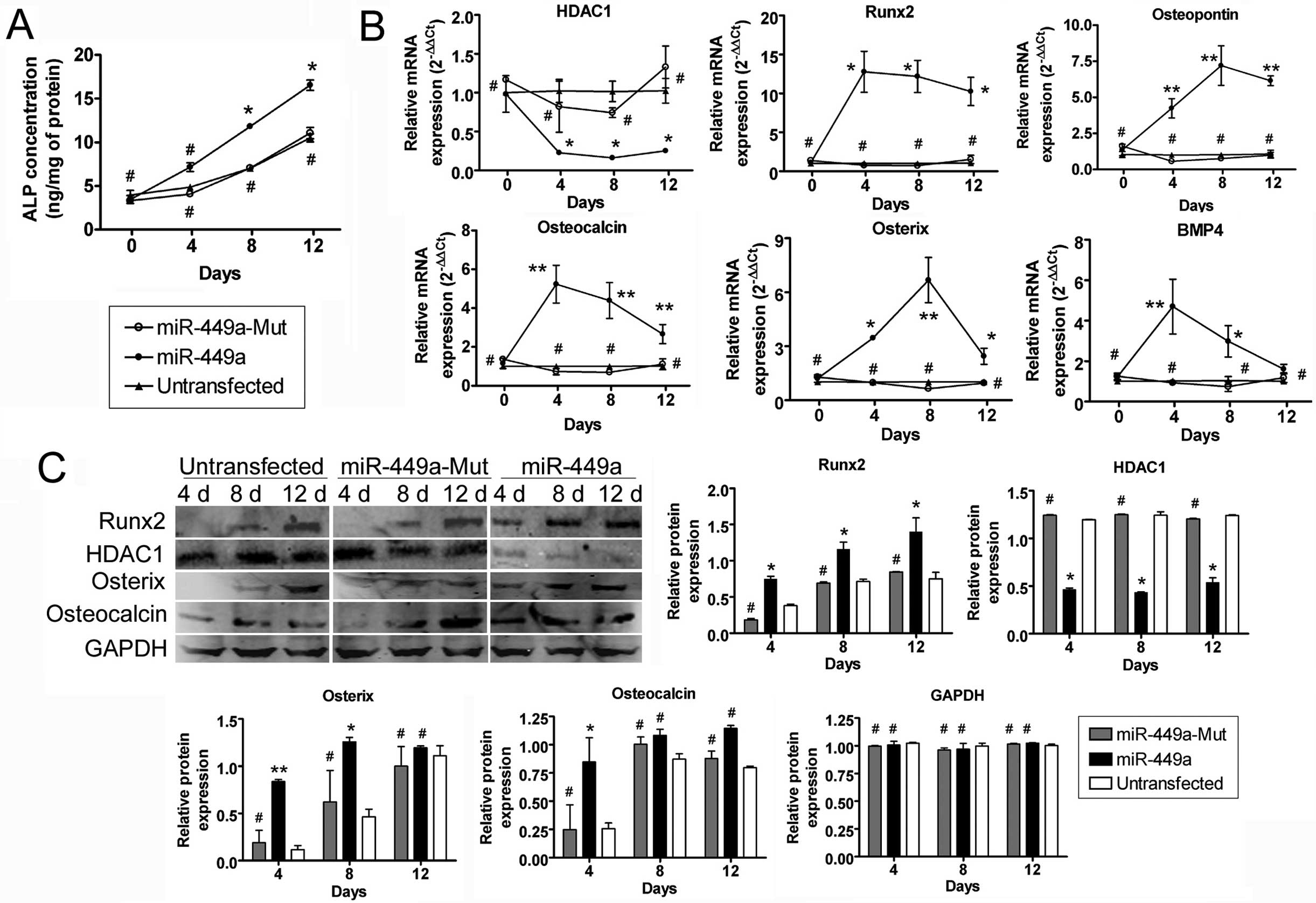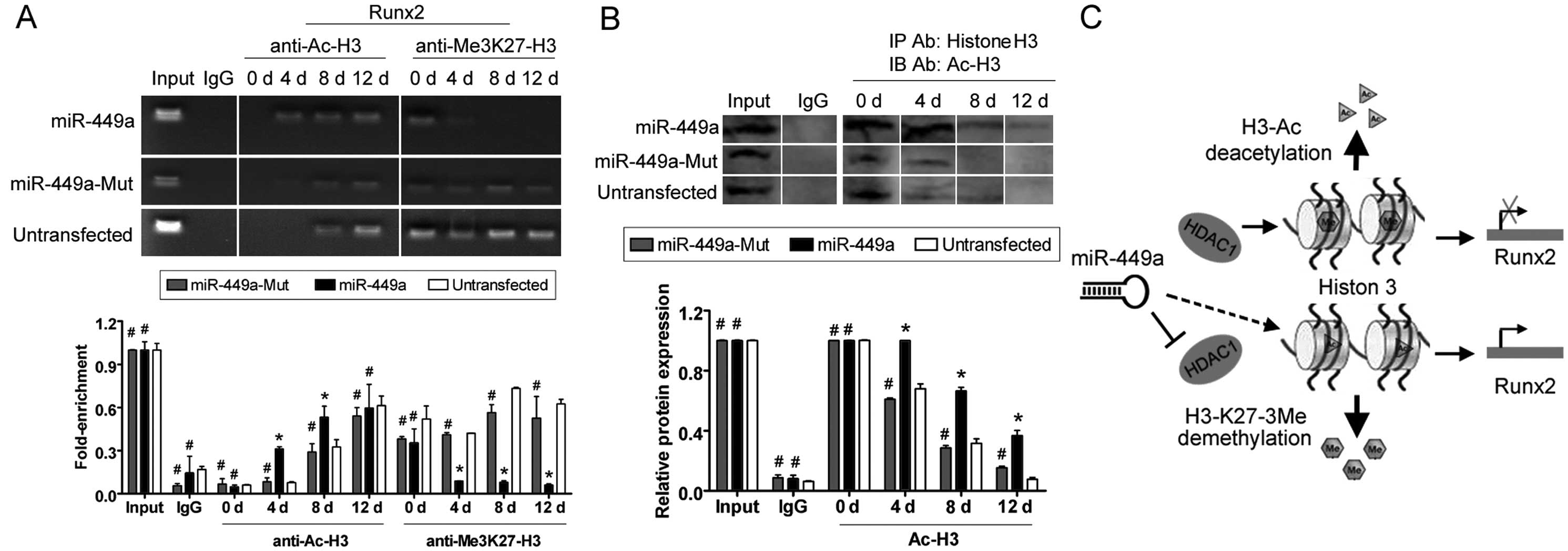|
1
|
Liu T, Zou G, Gao Y, et al: High
efficiency of reprogramming CD34(+) cells derived from human
amniotic fluid into induced pluripotent stem cells with Oct4. Stem
Cells Dev. 21:2322–2332. 2012. View Article : Google Scholar : PubMed/NCBI
|
|
2
|
Liu T, Cheng W, Huang Y, Huang Q, Jiang L
and Guo L: Human amniotic epithelial cell feeder layers maintain
human iPS cell pluripotency via inhibited endogenous microRNA-145
and increased Sox2 expression. Exp Cell Res. 318:424–434. 2011.
View Article : Google Scholar : PubMed/NCBI
|
|
3
|
Jin GZ, Kim TH, Kim JH, et al: Bone tissue
engineering of induced pluripotent stem cells cultured with
macrochanneled polymer scaffold. J Biomed Mater Res A.
101:1283–1291. 2012.PubMed/NCBI
|
|
4
|
Takahashi K and Yamanaka S: Induction of
pluripotent stem cells from mouse embryonic and adult fibroblast
cultures by defined factors. Cell. 126:663–676. 2006. View Article : Google Scholar : PubMed/NCBI
|
|
5
|
Takahashi K, Tanabe K, Ohnuki M, et al:
Induction of pluripotent stem cells from adult human fibroblasts by
defined factors. Cell. 131:861–872. 2007. View Article : Google Scholar : PubMed/NCBI
|
|
6
|
Kuroda S, Sumner DR and Virdi AS: Effects
of TGF-beta1 and VEGF-A transgenes on the osteogenic potential of
bone marrow stromal cells in vitro and in vivo. J Tissue Eng.
3:20417314124597452012. View Article : Google Scholar
|
|
7
|
Diekman BO, Christoforou N, Willard VP, et
al: Cartilage tissue engineering using differentiated and purified
induced pluripotent stem cells. Proc Natl Acad Sci USA.
109:19172–19177. 2012. View Article : Google Scholar : PubMed/NCBI
|
|
8
|
Buttery LD, Bourne S, Xynos JD, et al:
Differentiation of osteoblasts and in vitro bone formation from
murine embryonic stem cells. Tissue Eng. 7:89–99. 2001. View Article : Google Scholar : PubMed/NCBI
|
|
9
|
Okamoto H, Matsumi Y, Hoshikawa Y, Takubo
K, Ryoke K and Shiota G: Involvement of microRNAs in regulation of
osteoblastic differentiation in mouse induced pluripotent stem
cells. PLoS One. 7:e438002012. View Article : Google Scholar : PubMed/NCBI
|
|
10
|
Hou X, Shen Y, Zhang C, et al: A specific
oligodeoxynucleotide promotes the differentiation of osteoblasts
via ERK and p38 MAPK pathways. Int J Mol Sci. 13:7902–7914. 2012.
View Article : Google Scholar : PubMed/NCBI
|
|
11
|
Zhang X, Ting K, Bessette CM, et al:
Nell-1, a key functional mediator of Runx2, partially rescues
calvarial defects in Runx2(+/−) mice. J Bone Miner Res. 26:777–791.
2010. View Article : Google Scholar
|
|
12
|
Nishimura R, Wakabayashi M, Hata K, et al:
Osterix regulates calcification and degradation of chondrogenic
matrices through matrix metalloproteinase 13 (MMP13) expression in
association with transcription factor Runx2 during endochondral
ossification. J Biol Chem. 287:33179–33190. 2012. View Article : Google Scholar : PubMed/NCBI
|
|
13
|
Iwasaki M, Piao J, Kimura A, et al: Runx2
haploinsufficiency ameliorates the development of ossification of
the posterior longitudinal ligament. PLoS One. 7:e433722012.
View Article : Google Scholar : PubMed/NCBI
|
|
14
|
Li X, Huang M, Zheng H, et al: CHIP
promotes Runx2 degradation and negatively regulates osteoblast
differentiation. J Cell Biol. 181:959–972. 2008. View Article : Google Scholar : PubMed/NCBI
|
|
15
|
Lucero C, Vega O, Osorio M, et al: The
cancer-related transcription factor Runx2 modulates cell
proliferation in human osteosarcoma cell lines. J Cell Physiol.
228:714–723. 2012. View Article : Google Scholar : PubMed/NCBI
|
|
16
|
Hu X, Zhang X, Dai L, et al: Histone
deacetylase inhibitor trichostatin A promotes the osteogenic
differentiation of rat adipose-derived stem cells by altering the
epigenetic modifications on Runx2 promoter in a BMP
signaling-dependent manner. Stem Cells Dev. 22:248–255. 2012.
View Article : Google Scholar : PubMed/NCBI
|
|
17
|
Buurman R, Gürlevik E, Schäffer V, et al:
Histone deacetylases activate hepatocyte growth factor signaling by
repressing microRNA-449 in hepatocellular carcinoma cells.
Gastroenterology. 143:811–820. e811–e815. 2012. View Article : Google Scholar : PubMed/NCBI
|
|
18
|
Jeon HS, Lee SY, Lee EJ, et al: Combining
microRNA-449a/b with a HDAC inhibitor has a synergistic effect on
growth arrest in lung cancer. Lung Cancer. 76:171–176. 2011.
View Article : Google Scholar : PubMed/NCBI
|
|
19
|
Noonan EJ, Place RF, Pookot D, et al:
miR-449a targets HDAC-1 and induces growth arrest in prostate
cancer. Oncogene. 28:1714–1724. 2009. View Article : Google Scholar : PubMed/NCBI
|
|
20
|
Liu T, Chen Q, Huang Y, Huang Q, Jiang L
and Guo L: Low microRNA-199a expression in human amniotic
epithelial cell feeder layers maintains human-induced pluripotent
stem cell pluripotency via increased leukemia inhibitory factor
expression. Acta Biochim Biophys Sin (Shanghai). 44:197–206. 2012.
View Article : Google Scholar
|
|
21
|
Cheng W, Liu T, Wan X, Gao Y and Wang H:
MicroRNA-199a targets CD44 to suppress the tumorigenicity and
multidrug resistance of ovarian cancer-initiating cells. FEBS J.
279:2047–2059. 2012. View Article : Google Scholar : PubMed/NCBI
|
|
22
|
Zhang L, Liu T, Huang Y and Liu J:
microRNA-182 inhibits the proliferation and invasion of human lung
adenocarcinoma cells through its effect on human cortical
actin-associated protein. Int J Mol Med. 28:381–388.
2011.PubMed/NCBI
|
|
23
|
Mukherjee A and Rotwein P: Selective
signaling by Akt1 controls osteoblast differentiation and
osteoblast-mediated osteoclast development. Mol Cell Biol.
32:490–500. 2011. View Article : Google Scholar : PubMed/NCBI
|
|
24
|
Cheng W, Liu T, Jiang F, et al:
microRNA-155 regulates angiotensin II type 1 receptor expression in
umbilical vein endothelial cells from severely pre-eclamptic
pregnant women. Int J Mol Med. 27:393–399. 2011.PubMed/NCBI
|
|
25
|
Guasconi V and Puri PL: Chromatin: the
interface between extrinsic cues and the epigenetic regulation of
muscle regeneration. Trends Cell Biol. 19:286–294. 2009. View Article : Google Scholar : PubMed/NCBI
|
|
26
|
Forcales SV and Puri PL: Signaling to the
chromatin during skeletal myogenesis: novel targets for
pharmacological modulation of gene expression. Semin Cell Dev Biol.
16:596–611. 2005. View Article : Google Scholar : PubMed/NCBI
|
|
27
|
Caretti G, Di Padova M, Micales B, Lyons
GE and Sartorelli V: The Polycomb Ezh2 methyltransferase regulates
muscle gene expression and skeletal muscle differentiation. Genes
Dev. 18:2627–2638. 2004. View Article : Google Scholar : PubMed/NCBI
|
|
28
|
Zhang Q, Stovall DB, Inoue K and Sui G:
The oncogenic role of Yin Yang 1. Crit Rev Oncog. 16:163–197. 2012.
View Article : Google Scholar : PubMed/NCBI
|
|
29
|
Affar el B, Gay F, Shi Y, et al: Essential
dosage-dependent functions of the transcription factor yin yang 1
in late embryonic development and cell cycle progression. Mol Cell
Biol. 26:3565–3581. 2006. View Article : Google Scholar : PubMed/NCBI
|














